Review – The Patek Philippe 5320g Perpetual Calendar, and The Inspirations Behind This Vintage-Inspired Piece
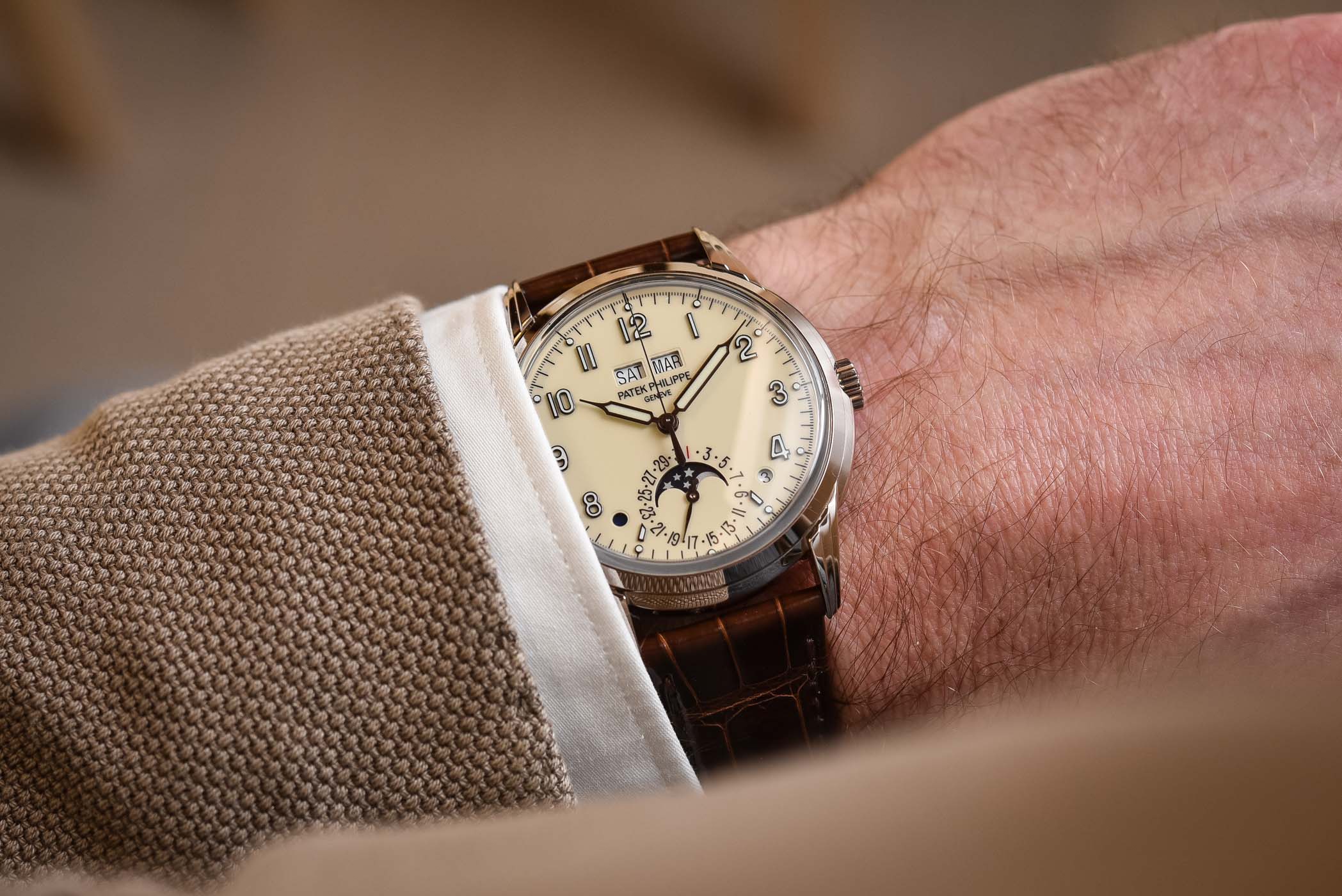
At Baselworld this year, Patek Philippe once again introduced a surprising watch, a piece with a unique look and a clear vintage inspiration – without mentioning a case to die for. For a few years now, Patek has accustomed us with a certain creativity, with watches that go out of the brand’s comfort zone (see for instance the controversial Calatrava Pilot 5524 or the Annual Calendar 5960A in steel). The 5320g Perpetual Calendar is amongst these special watches, even if here, it prompted a unanimously positive response. Today, we take a closer look at this vintage/military-inspired piece and also to the different watches that inspired its creation.
Various vintage inspiration to create a unique watch
Before looking at the Patek Philippe 5320g Perpetual Calendar in detail, we have to understand where it comes from. Indeed, this watch is a contemporary creation and not a proper re-edition of one single vintage model. Yet, several of its key elements have been designed after some glorious and rare references among Patek’s vintage collection.
Everything starts with the creation of Patek’s first serially-produced perpetual calendar wristwatch, the Reference 1526. First issued in 1942 and produced in only 210 examples, it was the first time the complex perpetual calendar was integrated into a wristwatch intended to be sold in the regular collection of a brand. Previous attempts are known, yet all were one-off pieces made on request (including the 1925 Patek Philippe 97’975, the world’s first wristwatch with a perpetual calendar). The reference 1526 and its horological sibling, the reference 1518 (with a chronograph in addition to the QP), displayed the time, the age of the moon and the perpetual calendar with a subtle and streamlined display, which was quite close to many of the complete calendar watches available at that time. One main specificity was the absence of leap year indication (a feature brought on the market in 1955 by AP, with the ref. 5516).
The first serially produced QP, the Patek Philippe 1526, featuring the iconic display used on the 5320g – credits: Christie’s
The ref. 1526 introduced a display that would later become iconic and used on many different watches created by Patek. Basically, it showed a sub-dial at 6 with the moon and the date, alongside two windows at 12 for the month and the day of the week. This exact display (with the exception of the leap year indication) was the basis for the watch we look at today, the 5320g.
As for the style of the dial, things get a little more obscure. Indeed, you have to search deeper inside Patek’s archives to find the source behind the creation of the 5320g, especially for the luminous/military-inspired dial. Yet, one watch, a unique piece manufactured in 1944, might well be the answer to our questions. The reference 1591, a unique stainless steel perpetual calendar, a watch that was unknown to literature and the market until 1996 when it was first offered at auction, was owned by a Maharaja who was wearing this robust timepiece occasionally when playing polo.
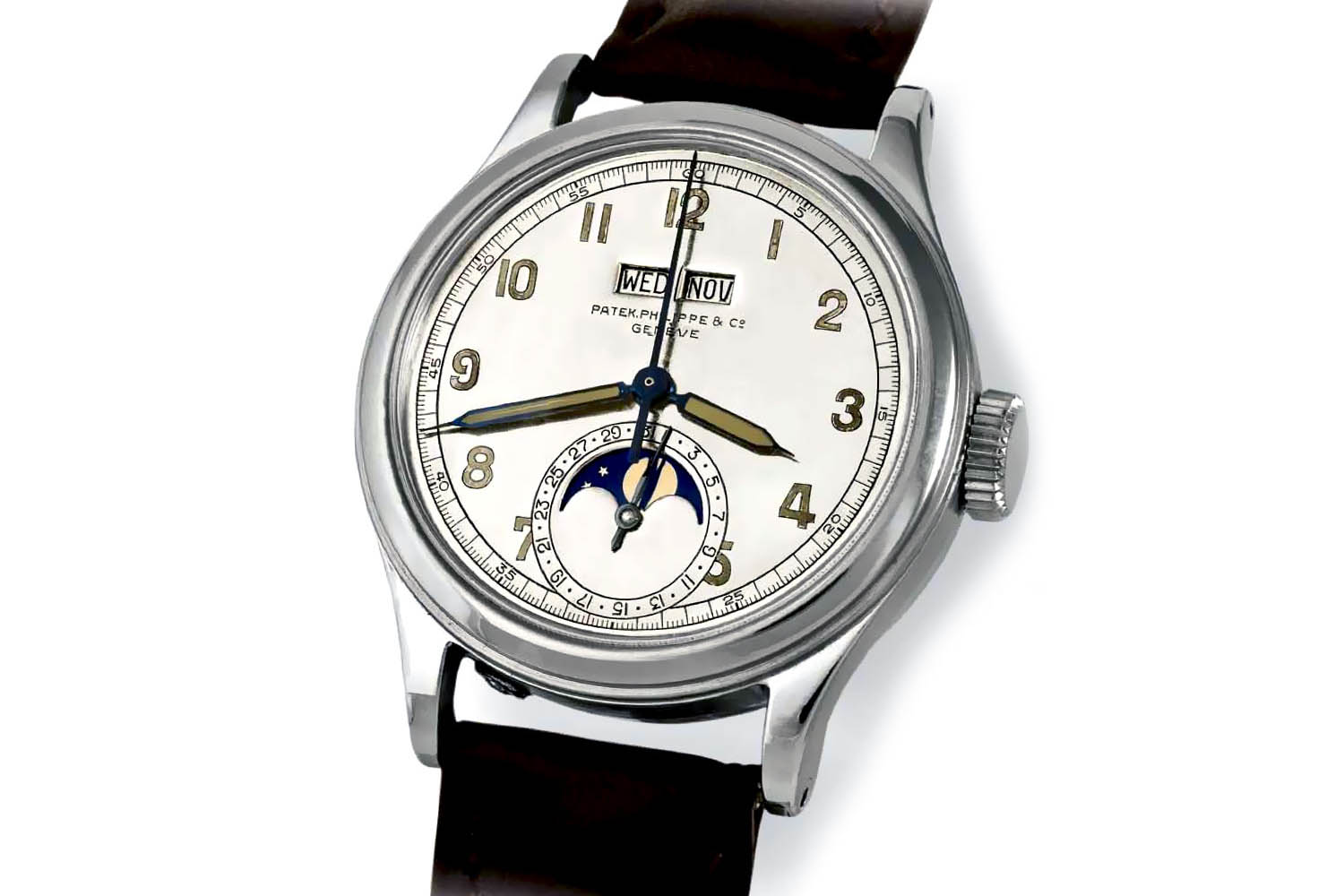
The Unique Patek Philippe 1591, the main inspiration for the dial of 5320g
This unique piece, with waterproof steel case, central second (no small second as in the ref. 1526) and classical QP display, presented a specific luminous dial, with painted Arabic numeral and blued syringe hands filled with luminous material. This watch, last sold by Christie’s in 2007 for an impressive CHF 2,513,000, is now exposed at the Patek Philippe museum. And when you take a closer look at it, you easily understand where the dial of the 5320g Perpetual Calendar comes from.
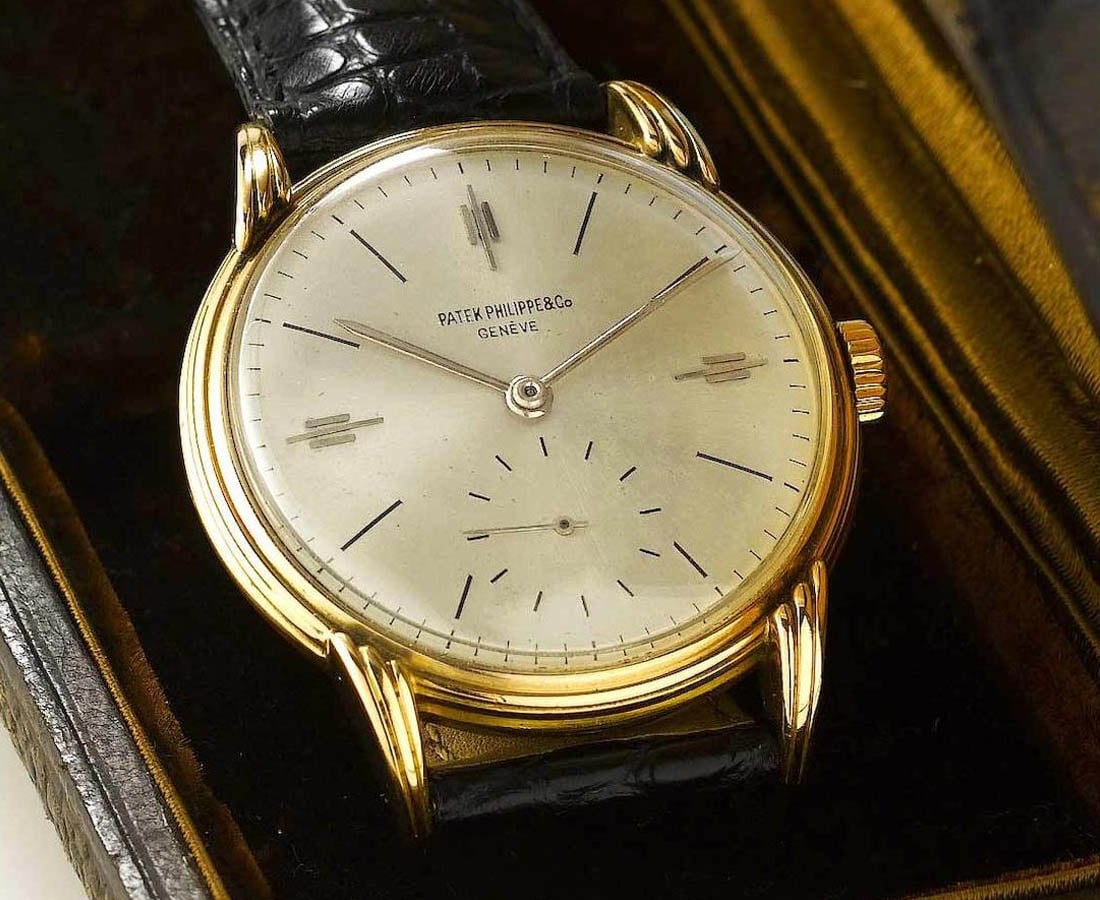 The Patek Philippe 2405, which inspired the lugs of the 5320g – credits Bonhams
The Patek Philippe 2405, which inspired the lugs of the 5320g – credits Bonhams
The last source of inspiration for the 5320g concerns the lugs. Clearly, these lugs might be the main attraction of this watch. Same as before, you have to go deep into Patek’s history to find where such lugs come from. A relatively rare reference, the 2405, a simple 3-hand watch from the 1940s, yet with a very specific case with gadroons and triple-stepped claw lugs – a typical late Art-Deco style used by several other manufactures in the late 1930s and early 1940s.
The Patek Philippe 5320g Perpetual Calendar
The preceding background/history was necessary, in order to understand where the Patek Philippe 5320g Perpetual Calendar found inspiration. Clearly, PP dug into its rich history here, knowing that collectors these days want something slightly different from the conservative offers, such as the Calatravas or the classical 5140 Perpetual calendar. Vintage is a hot trend and surprisingly, such retro-inspired watches are the best way to attract younger clients (quite ironic, isn’t it… the nostalgia effect clearly work on the X generation). While Patek was leaning against the wind for some years, by relying on their classical watches, it was sad not to see them using what might be one of the most important collections of vintage watches to create some slightly retro-inspired pieces. Yet, as you can see with the 5320g Perpetual Calendar, they have changed that stance, but without choosing the easiest way.
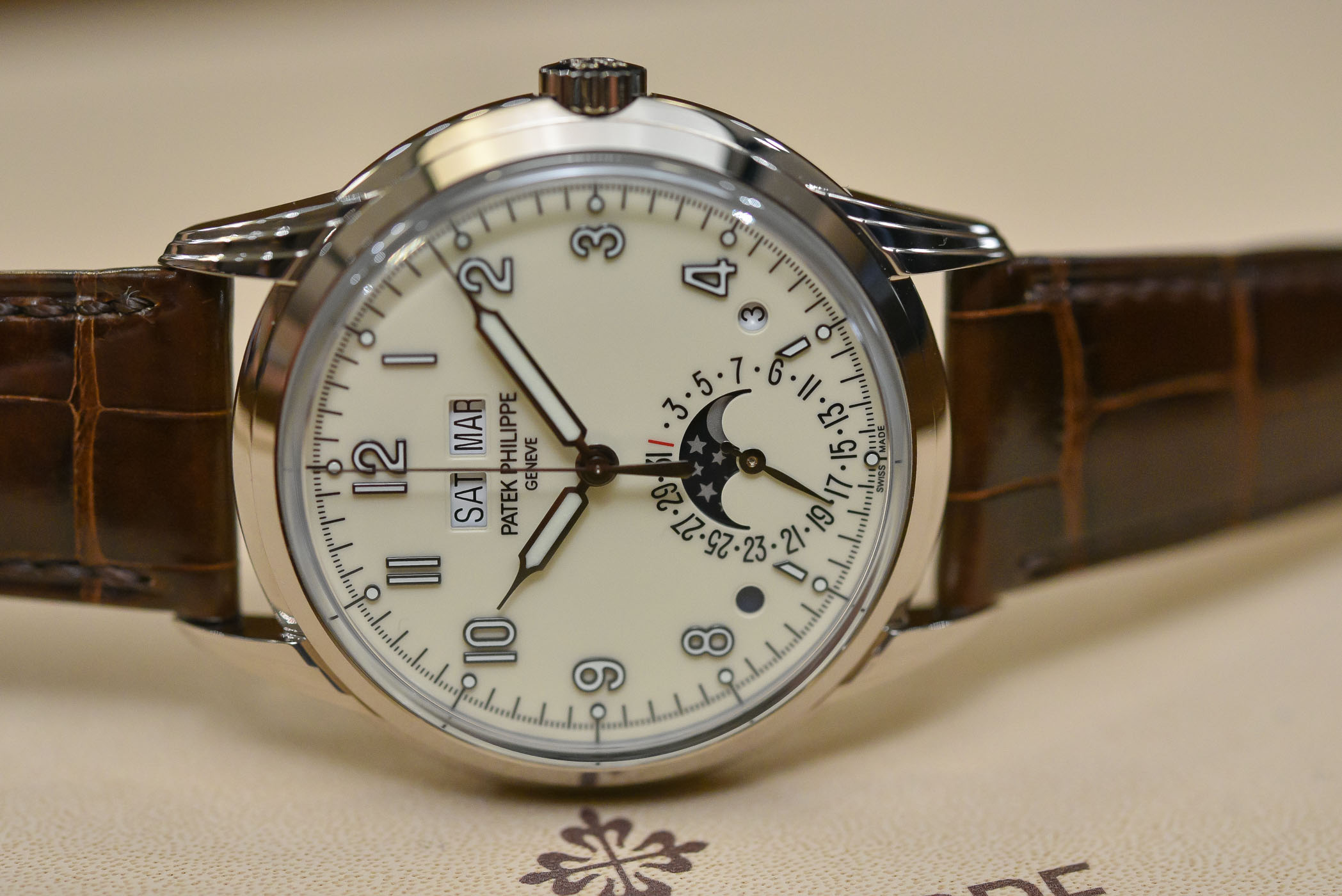 The 5320g Perpetual Calendar is not a re-edition of a single watch but instead, it compiles several strong elements of various watches. As we’ve seen in the background part of this article, there are two main features that took inspiration in vintage watches: the dial and the case. The latter is probably one of the nicest cases Patek has recently introduced (no kidding). It is thin, elegant, original, perfectly assembled and finished and very unique to this watch. Measuring a reasonable 40mm diameter and 11.13mm height, its proportions are elegant and refined. Only available in white gold for the moment, it shows straight lines and sharp angles, as well as a flawless polishing.
The 5320g Perpetual Calendar is not a re-edition of a single watch but instead, it compiles several strong elements of various watches. As we’ve seen in the background part of this article, there are two main features that took inspiration in vintage watches: the dial and the case. The latter is probably one of the nicest cases Patek has recently introduced (no kidding). It is thin, elegant, original, perfectly assembled and finished and very unique to this watch. Measuring a reasonable 40mm diameter and 11.13mm height, its proportions are elegant and refined. Only available in white gold for the moment, it shows straight lines and sharp angles, as well as a flawless polishing.
Talking about this case, a few comments are necessary. First of all, as you probably read on other publications, the case of the 5320g Perpetual Calendar is indeed stamped and not milled (a process that is used in lower price ranges, as usually less costly than a milling process). Yet here, we’re talking Patek Philippe and they are not known to make shortcuts. The decision to have a stamped case is deliberate and guided by the need to have clear straight lines and sharp angles, especially on the junction between the central container and the lugs. Another solution would have been to solder the lugs, something Patek never does. A stamped case doesn’t mean that no human hands were involved either – at least at Patek. Once the single block of white gold is stamped, many steps are required to achieve these sharp angles and all the details of the lugs. Finally, the polishing process is highly complex in order to keep these razor-sharp lines intact.
One of the key features of this Patek Philippe 5320g Perpetual Calendar are these three-step claw lugs, which alone could well be a sufficient reason to buy this watch. As we’ve seen in the historical part, these lugs can be related to a past model of the brand, the reference 2405, although there are no rounded triple-gadroon style here, but rather a sharp and modernized version of this Art-Deco design. Once again, the 5320g is “inspired by” but not copying. The result are thin, elongated and elegant lugs that provide a strong character to this watch, without being too present or feeling overdone. They perfectly match with the rest of the case.
For the dial, Patek chose to go wild – just a bit – and vintage – quite a lot. The resemblance with the unique reference 1591 is undeniable, however, there’s has been a clean contemporary touch added to it. For the 5320g Perpetual Calendar, Patek went for a cream-coloured lacquered dial that recalls the patina found on certain vintage watches, linked to a box-sapphire crystal, highly domed. Both features add great warmth to the piece and a period-relevant appeal, again without overdoing it. The rest follows the same rule: applied luminous Arabic numerals in blackened white gold with a military style and syringe hands that recalls the ones found on the reference 1591 (even if Patek claims that they were inspired by some luminous versions of the 1463 chronograph, and named “fine-tipped baton hands filled with Superluminova”).
For this 5320g, Patek has created a new display. Indeed, the combination of central second and perpetual calendar was, in the current collection, linked to the retrograde display found, for instance, on the reference 5496. On this watch, we have a combination of windows for the day and month, as well as sub-dial for the date and moon, and finally small circular windows for the leap year and the day-and-night indicator (on each side of the moon). This recalls the QP module used on the Chronograph Perpetual Calendar 5270, yet in the context of a QP-only watch. This is no revolution here, just an update of an existing movement with a different module. However, this display is in line with the vintage/sporty context wanted by Patek and is a clear reminiscence of the display found in the steel 1591 shown above.
Overall, Patek Philippe mastered the design of this 5320g Perpetual Calendar. The elegance of the case, the slightly quirky shape, the precision with which the case is done and polished, the association between the colours, the hands, the indexes, the historically relevant display, the use of vintage elements in a perfectly dosed way… To me, in short, this 5320g is both Patek at its best, and Patek gone wild (relatively speaking).
As for the mechanics, the 5320g is based on a well-known movement of the brand, the automatic with centrally-mounted rotor Calibre 324 – used in various simple Calatravas, in the Nautilus 5711, in the Aquanaut, and as a base for the annual calendars or for the 5496. The calibre 324 S Q (S stands for seconds, Q for quantième perpétuel – the French term for perpetual calendar) is a refined QP version of the legendary self-winding 324. The update, compared to previous versions of this movement, is essentially focussed on the top module, in order to create the new display. It also includes Patek’s latest innovations, meaning the Gyromax balance or the Spiromax balance spring made of high-tech Silinvar (silicon technology).
Under the large 21k gold rotor are nicely decorated parts, with round-chamfered and polished edges, Geneva striping and gold-filled engravings, screws with polished, chamfered slots in bores with polished countersinks. All of that is certified by the Patek Philippe seal, which also implies a great precision, with maximum rate deviation ranging between -3 and +2 seconds per day. If the decoration is faultless and perfectly executed, this movement might miss a bit of eccentricity and “panache” to make it even more appealing. Also, its power reserve of minimum 35 hours and maximum 45 hours feels slightly outdated compared to the competition – even if the length of the power reserve is less relevant on an automatic watch.
Conclusion
No need to tell more… You certainly understood that we find this watch really sexy here, at MONOCHROME (in fact, it was even included in Frank’s, Xavier’s and my Top 10 watches of Baselworld 2017). Patek Philippe is slowly changing direction, sometimes with rather controversial pieces, sometimes with almost unanimously applauded watches such as this 5320g Perpetual Calendar. The best point comes from the fact that, even if it uses vintage elements to create a contemporary design, it doesn’t take shortcuts. It is not copying an existing model but relies on the rich past of Patek to create a stunning package. Elegant, refined, original and superbly executed…
The price for the Patek Philippe 5320g is CHF 73,000 and it is now available at official boutiques and retailers. More details on www.patek.com.
Technical Specifications – Patek Philippe 5320g Perpetual Calendar
- Case: 40mm diameter x 11.13mm height – 21mm lug width – 18k white gold – sapphire-crystal on the dial side – sapphire-crystal case back and interchangeable solid 18K white-gold back – 30m water resistant
- Movement: Calibre 324 S Q, in-house produced – Patek Philippe Seal – self-winding – 4Hz frequency – 35-45 hours power reserve – 367 parts, including 29 jewels – hours, minutes, seconds, moon phases, perpetual calendar with date, day of the week, month, leap year and day-and-night indicator
- Dial: Brass, cream-coloured lacquer – Applied Arabic numerals in blackened gold – sharp-tipped baton Hour and minute hands in blackened 18K gold
- Strap: Hand-stitched alligator leather with large square scales, shiny chocolate brown, fold-over clasp in 18k white gold
- Reference: 5320G-001
- Price: CHF 73,000

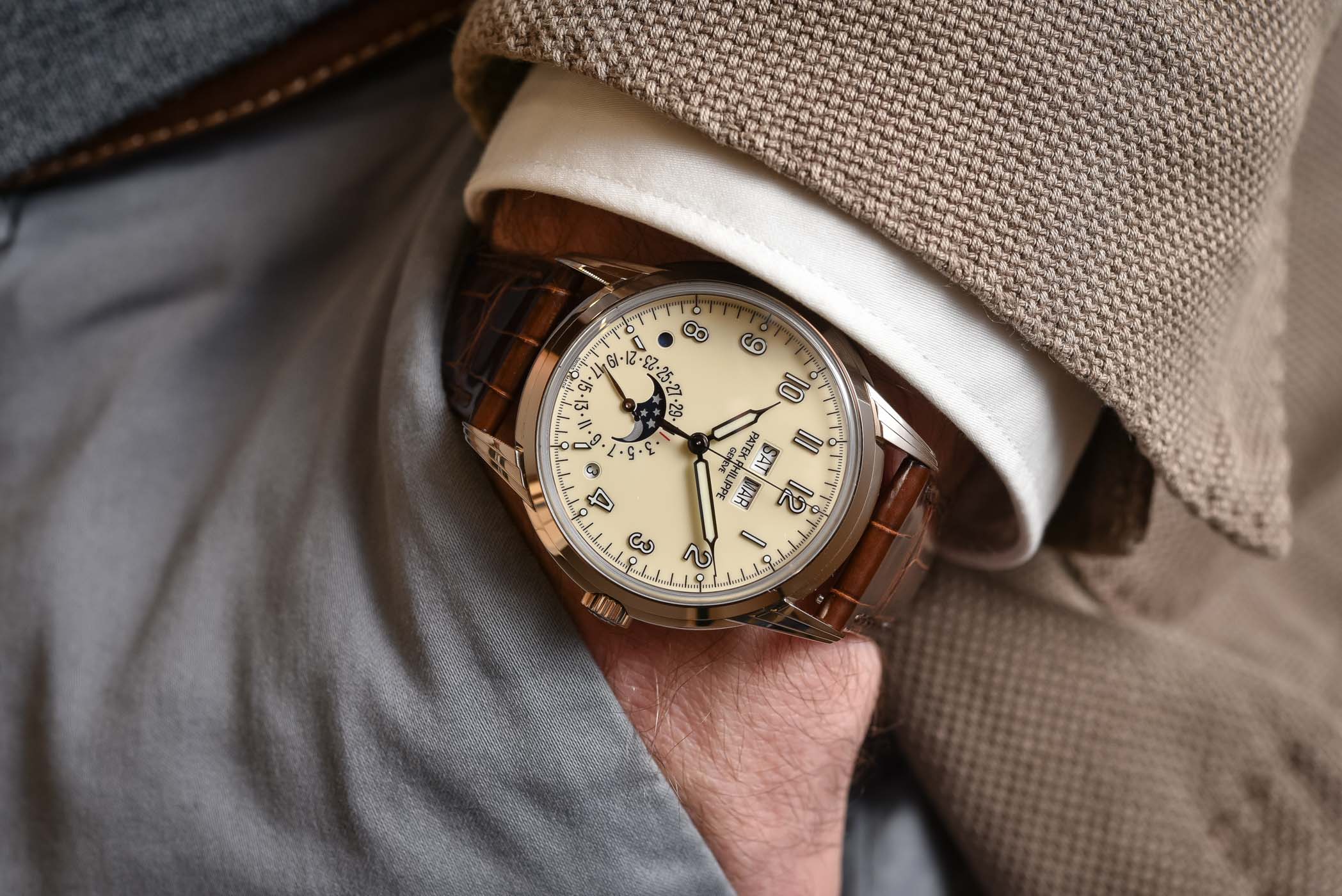
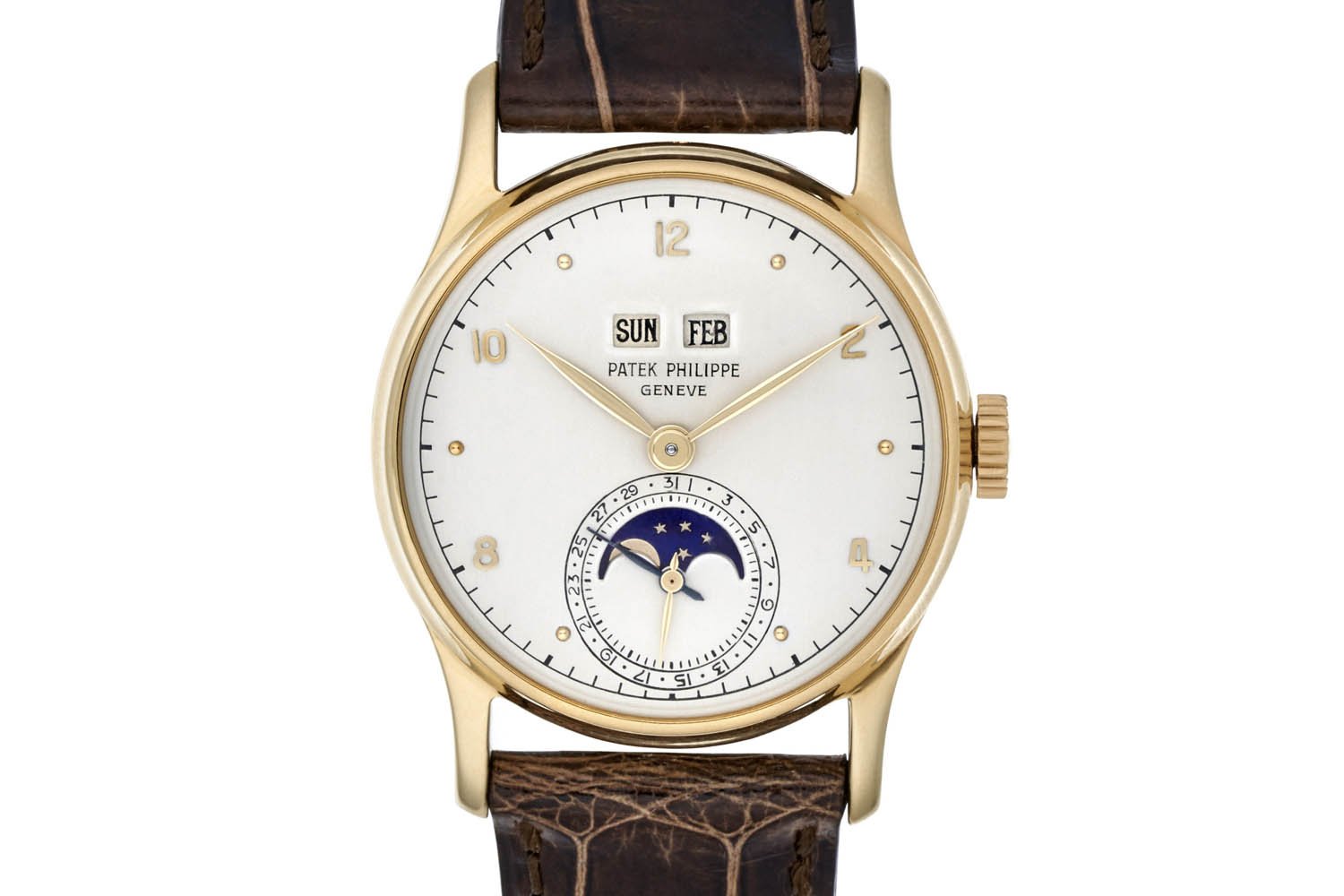
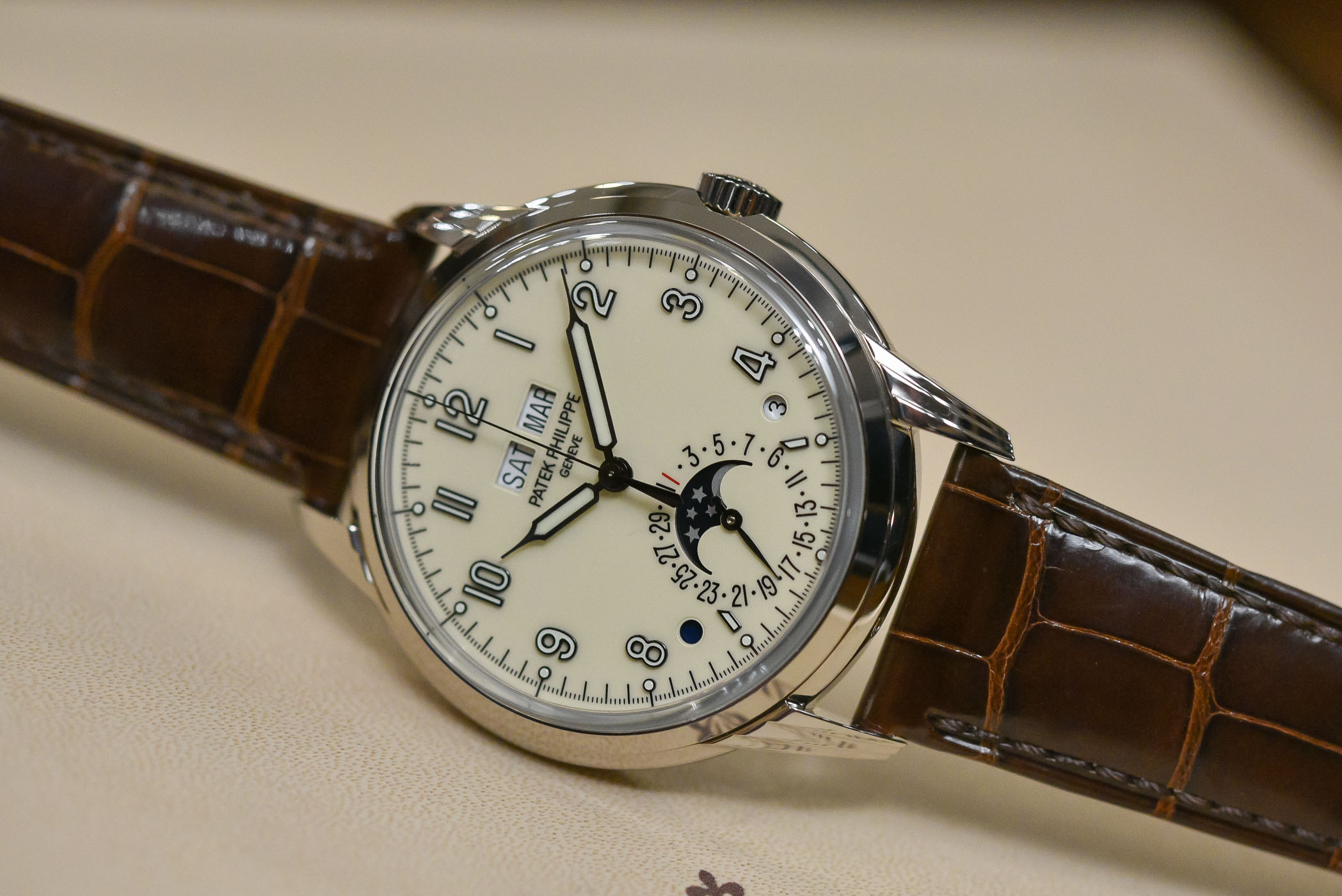
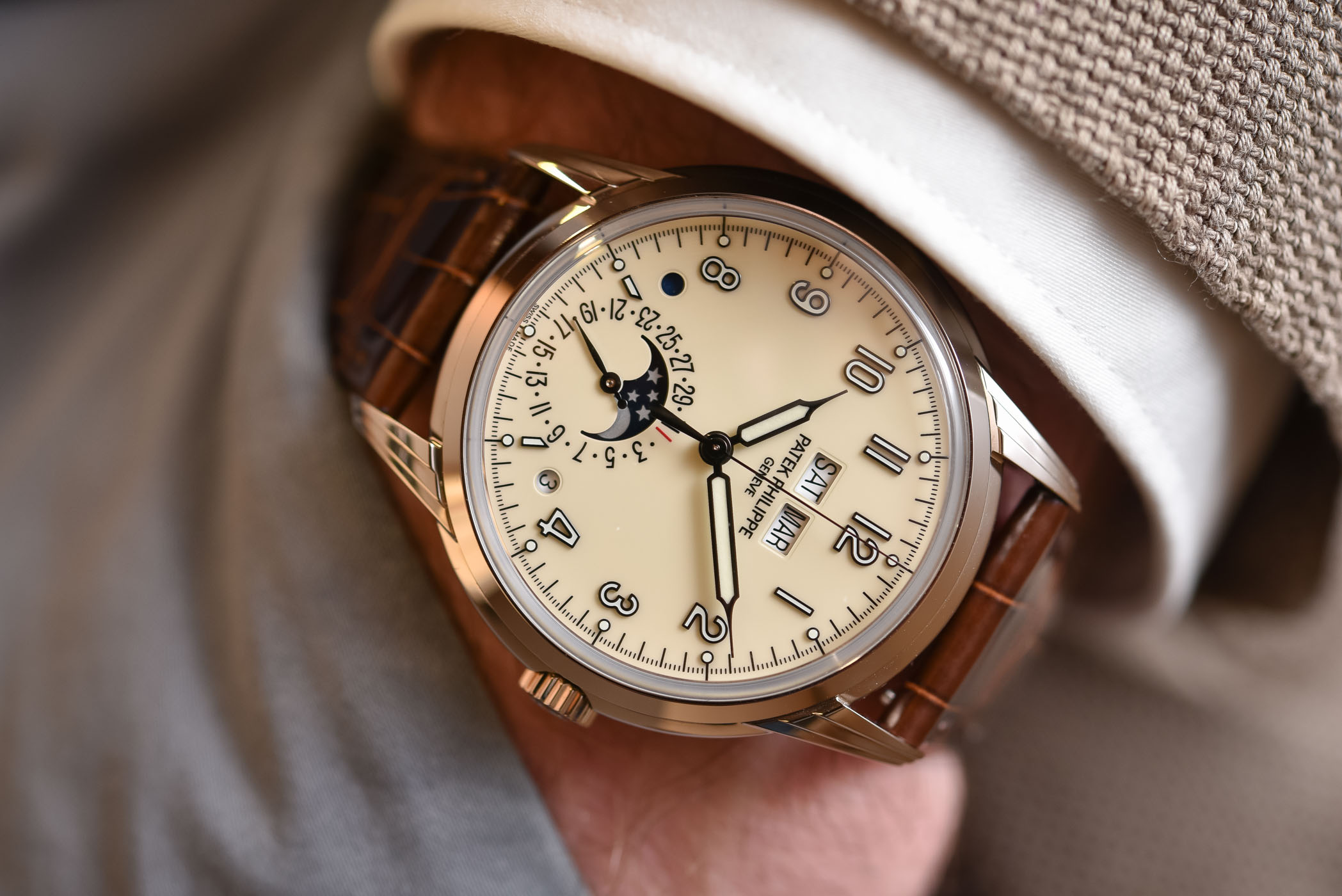
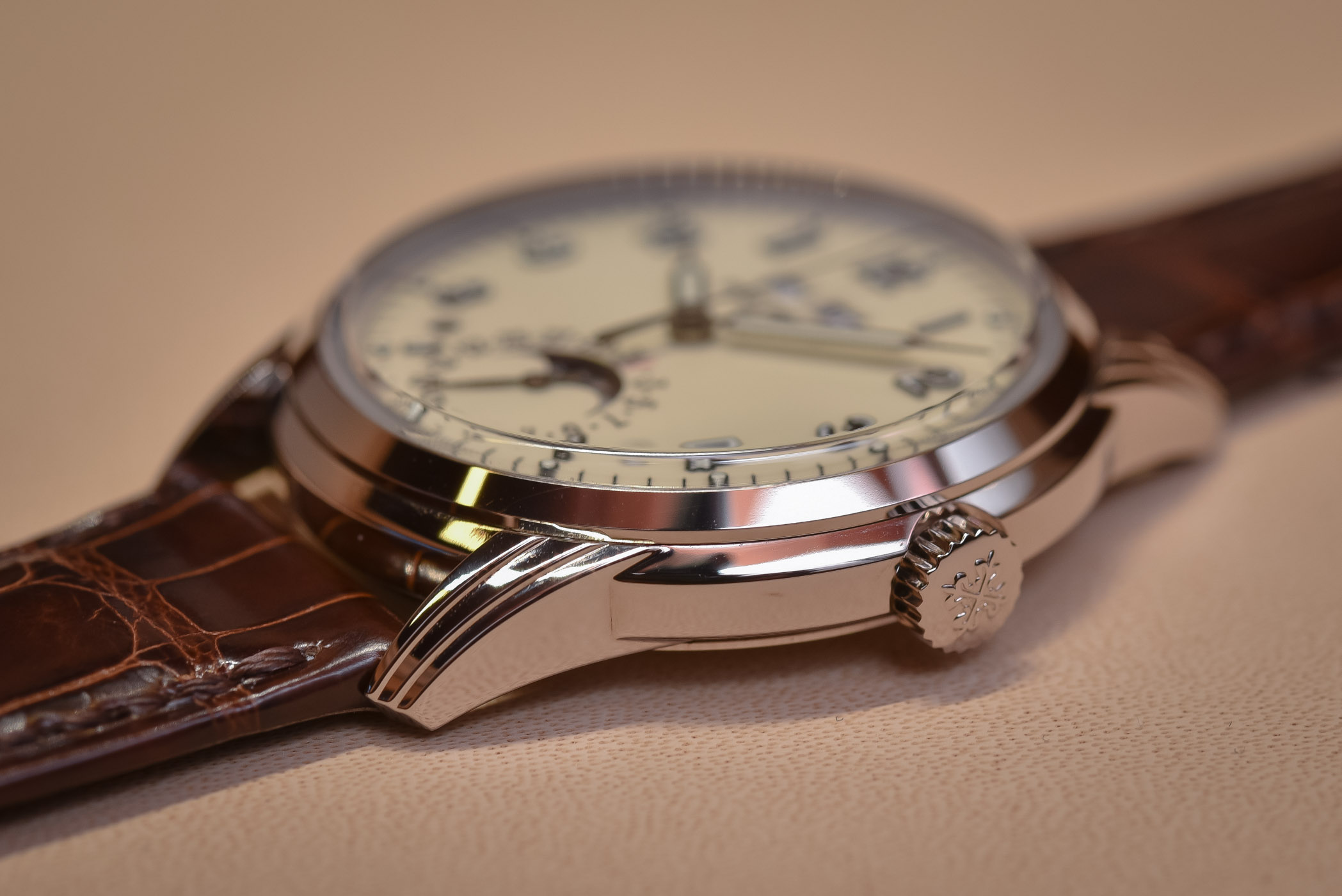
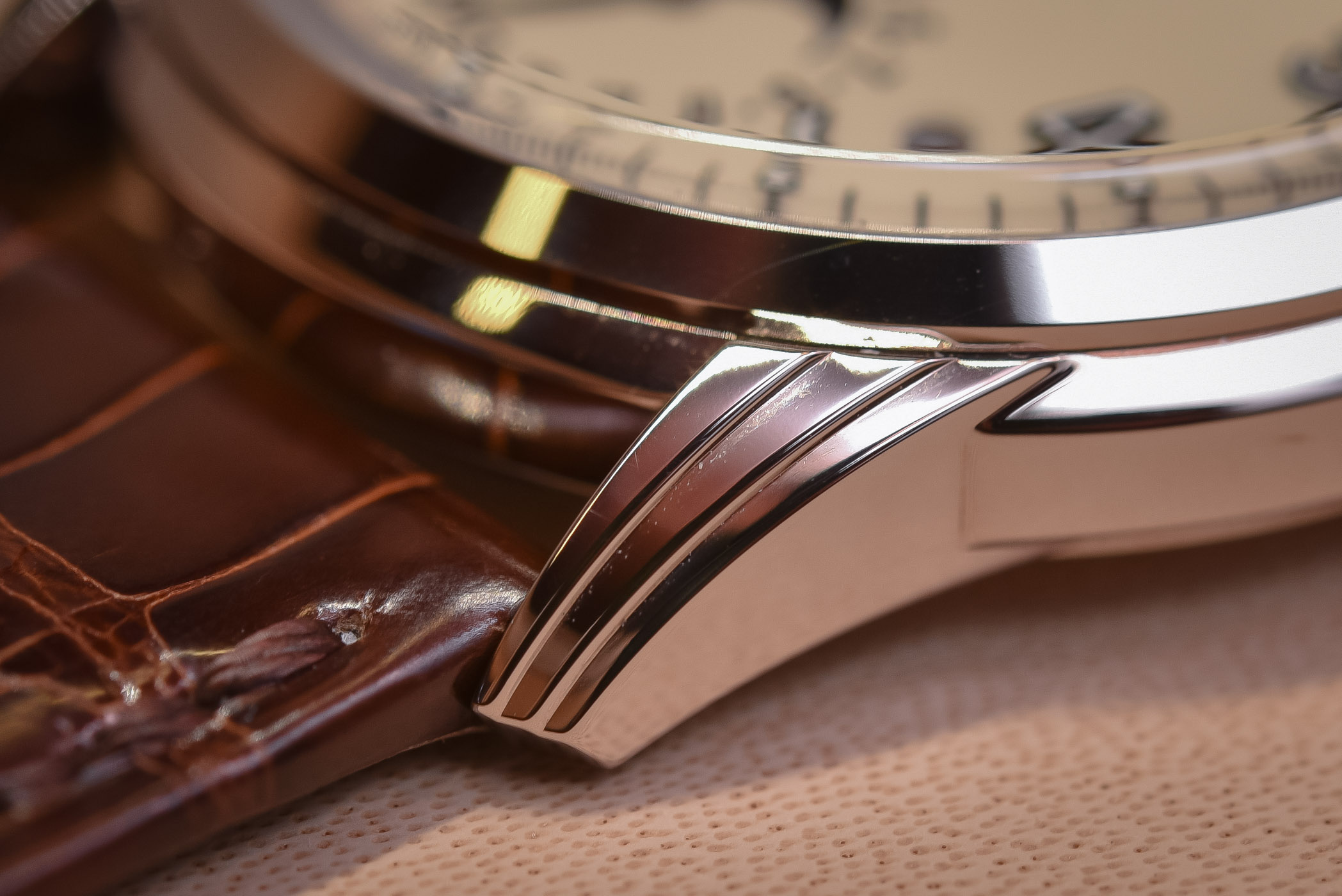
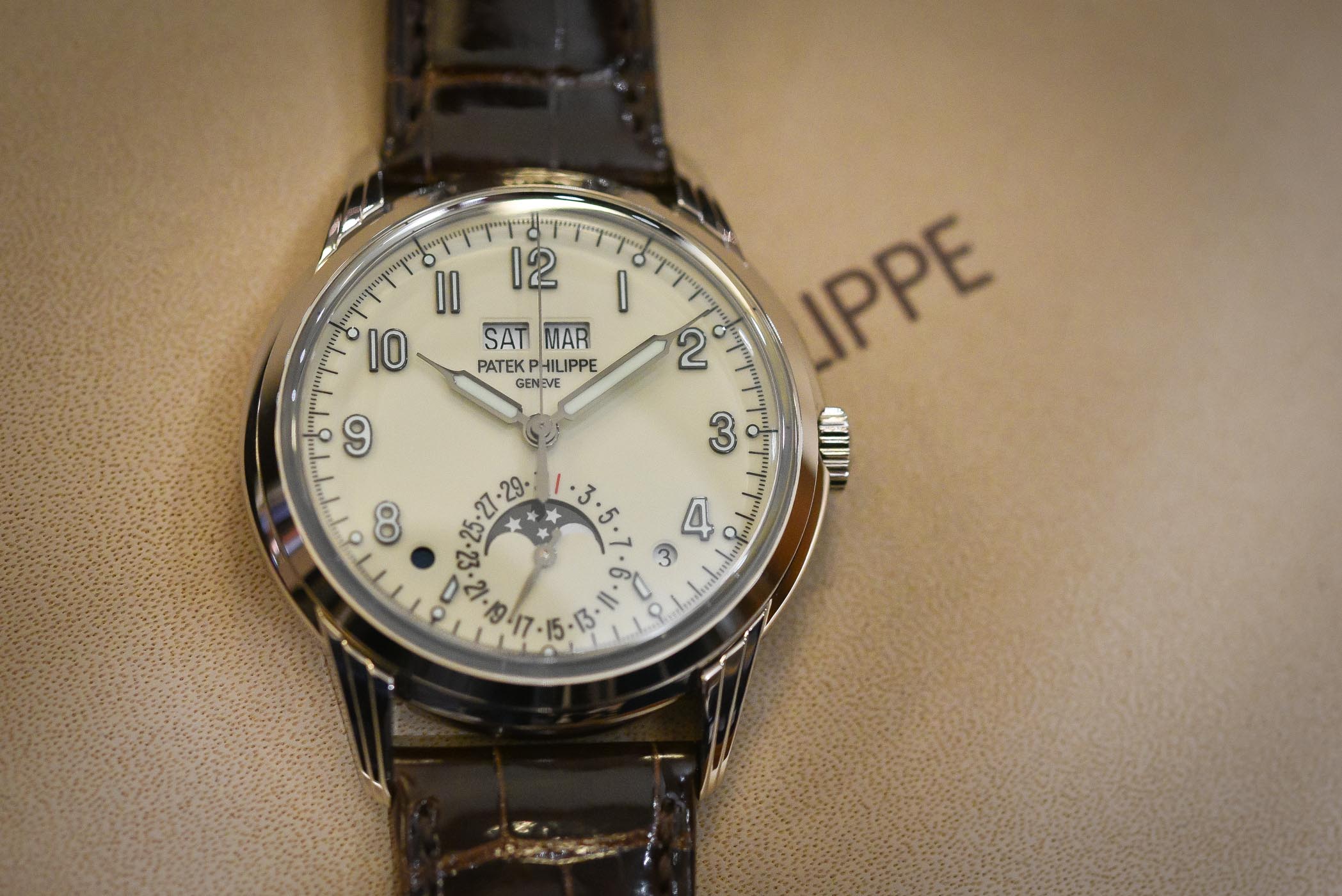
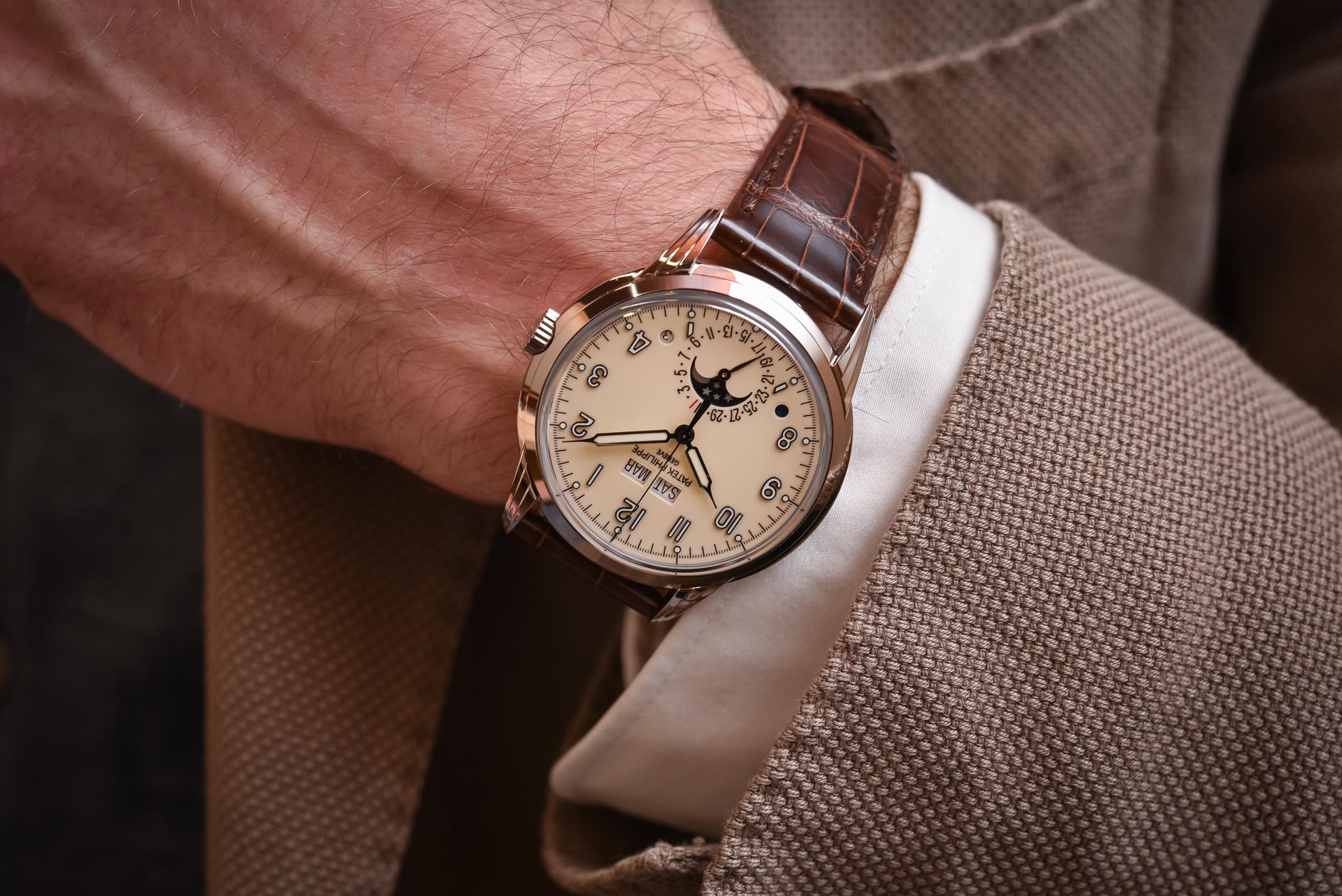

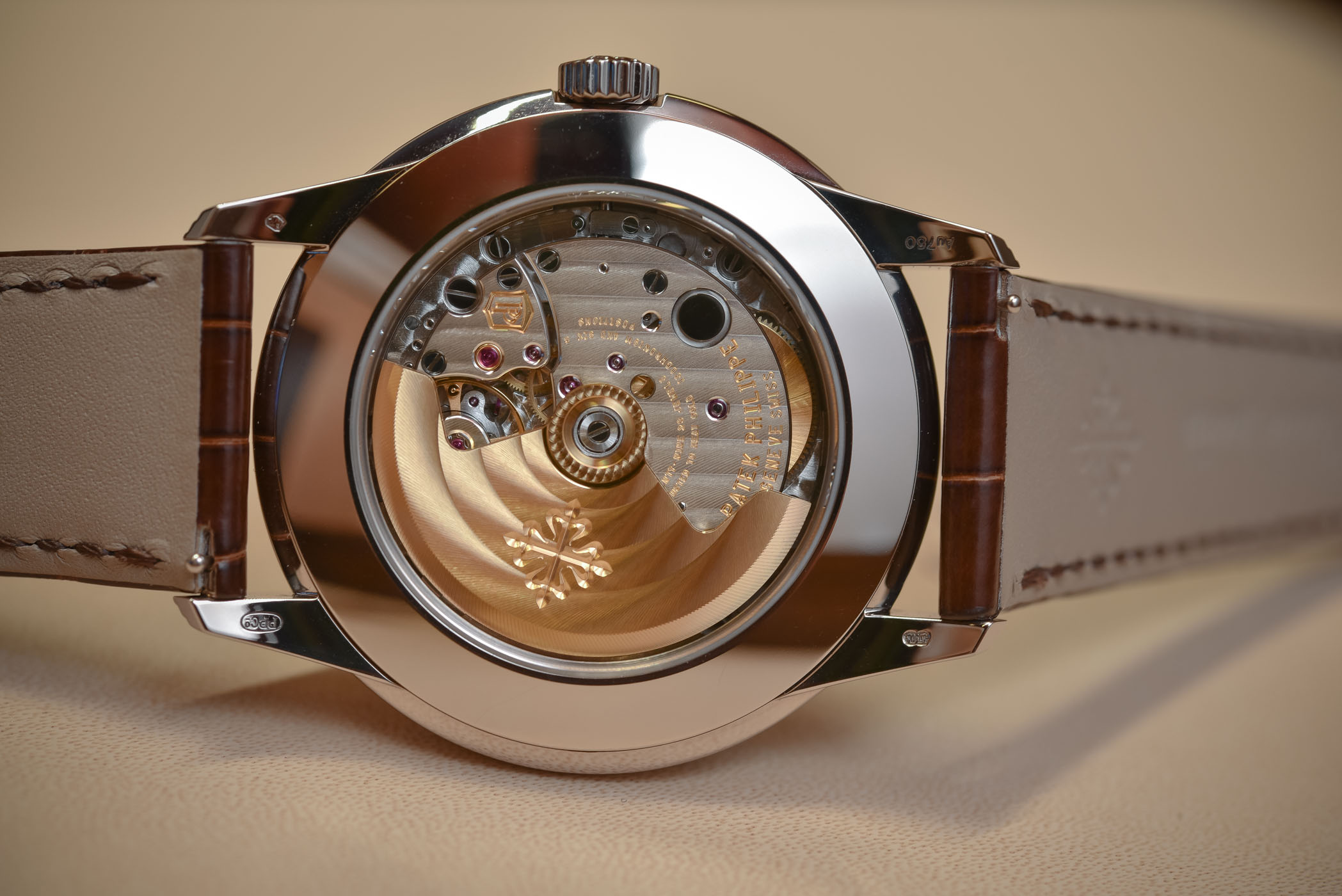
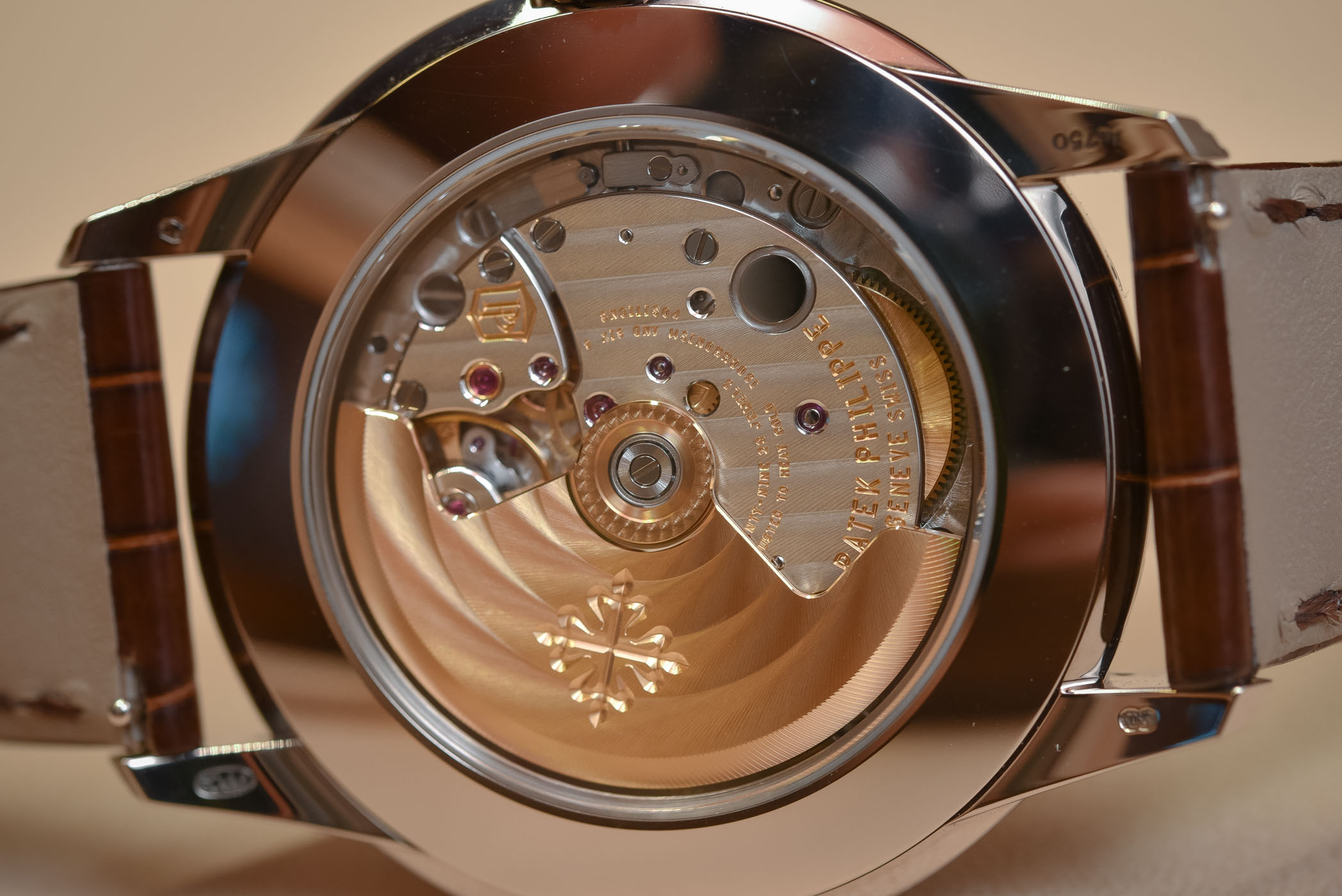
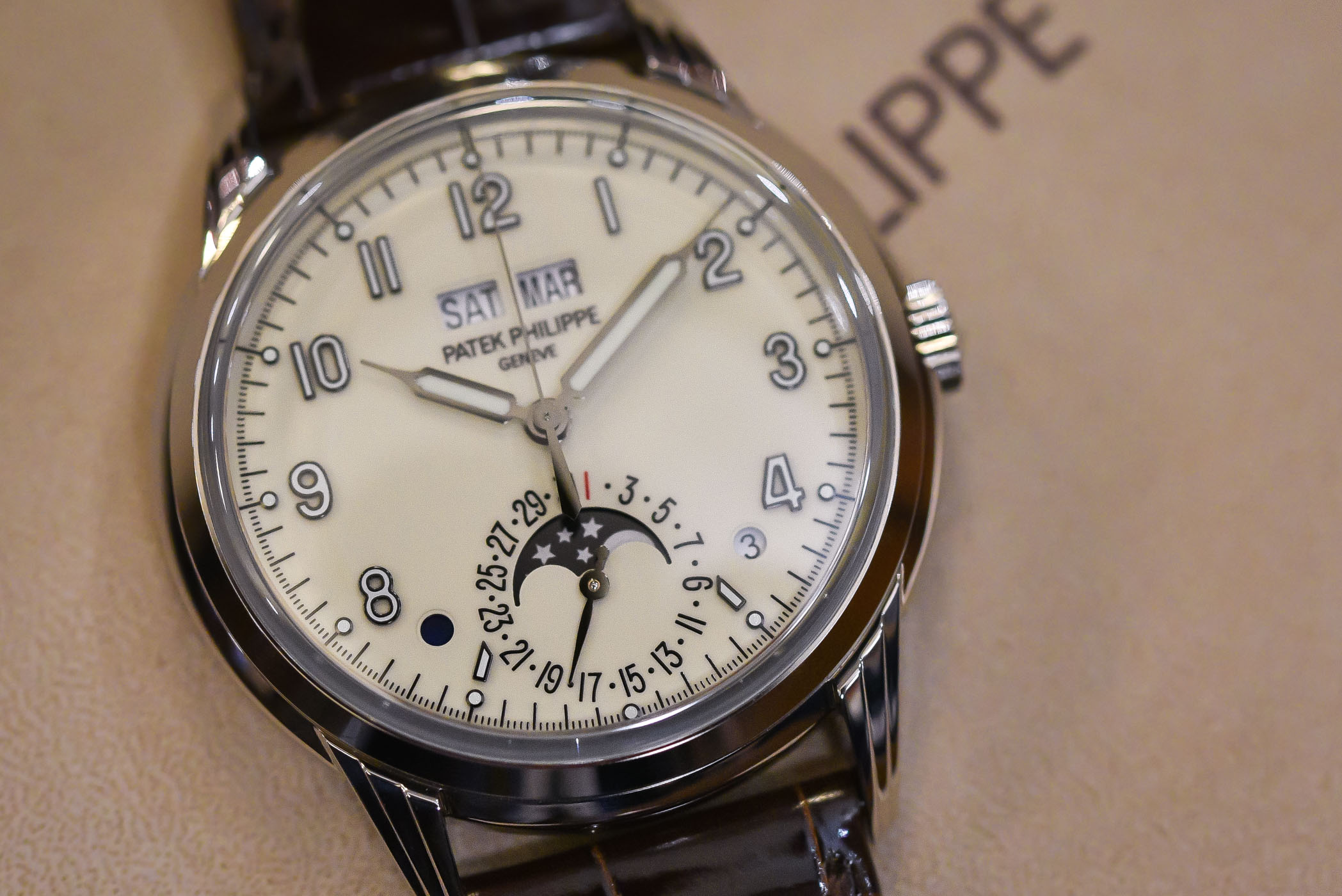



3 responses
Instant change?
Strangely, I am not a big fan of Patek, finding the overall aesthetic of the brand too safe and the prices simply too high. But I have always admired the annual and perpetual calendars because they were thin and clearly dialed. I wish this was a 38, but even so, this watch is my new favorite of the brand. The dial has just enough edge to it to catch my attention, and its homage to the past really impresses me.
Fantastic … having in mind my 5204-R. I am going to buy it for Christmas as a gift for the ’77th year